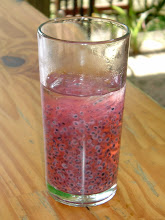Well it’s been a busy week here in Port Angeles. Just learning the neighborhood, the Peninsula campus & people, organic chem, ecology (local & beyond) & about the Elwha.
I am very excited to join Anne Shaffer’s near shore team of REU students + Jenna, currently of the WDFW. Do I ever have a lot to learn about fish! & everything else!
We started meeting with the trying on of the dry suits (loaners from another project), this was a surprisingly entertaining endeavor, & another new experience for me. I started out feeling like an apple in an apple bobbing game or a maybe a buoy, & ended up feeling like I’d been shrink wrapped. Fortunately my suit did not leak, some did to different degrees. These will be used during snorkel surveys & seining. It will be challenging to swim in them; I will be in good shape & learning my fish species in a hurry!
On another note, I have been doing a bit of research on dams, mostly in the news. Just digesting some of the controversy that seems to surround just about every single one. It seems that the Elwha dams were at least somewhat controversial from the beginning. It has been interesting to check out various news items regarding the construction, demolition & everything in between of/ on dams around the world. Even the smallest dams, such as one on the Conewango Creek at Warren Pennsylvania, generate strong opinions. The pending removal of this low water dam seems to be opposed by some community members merely for aesthetic reasons. On the other hand the proposed Traveston Crossing Dam in Australia & Swarzeneggers new Sites (Sacramento River) & Temperance Flats (San Joaquin) dam proposals (
http://wwwdwr.water.ca.gov/) are generating much opposition, mostly due to the anticipated environmental impacts. It seems that the human benefit of a dam has historically been viewed as being in direct conflict with the environmental harms. This attitude seems to have changed a great deal, especially in more recent history. The value of sustainable fish populations is being thoroughly reassessed, for both economic and environmental health. But still we see cases, as in Ca, where concerns regarding human water needs are being used to justify the construction of more barriers. Global climate change is being used as a rationalization in this case, which strikes many people as being very odd due to the anticipated negative impacts of these dams, & this coming from the Governor whose environmental stance is so well respected. It will be interesting to follow the progress of the Snake River dams that are currently in the news. I will continue to watch the pro & con arguments regarding this project.
Hasta luego! mel






























